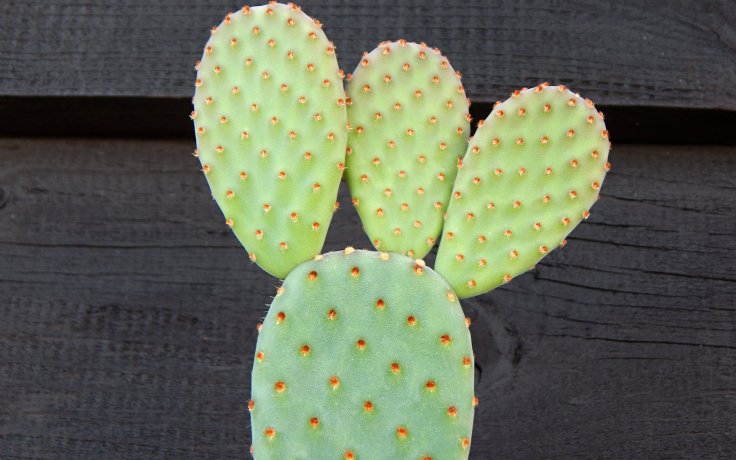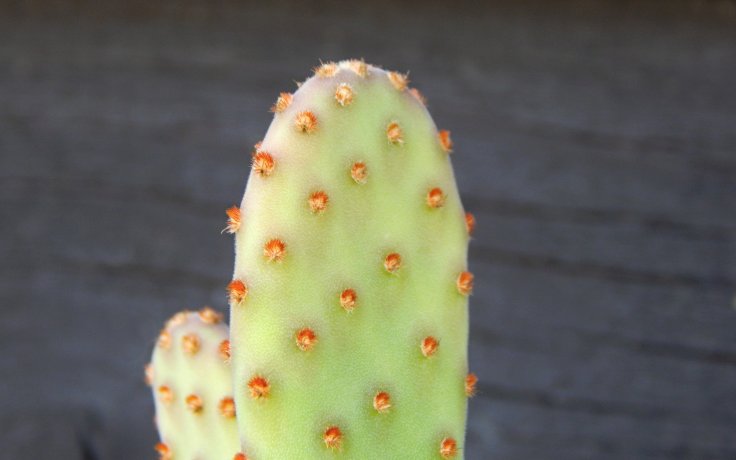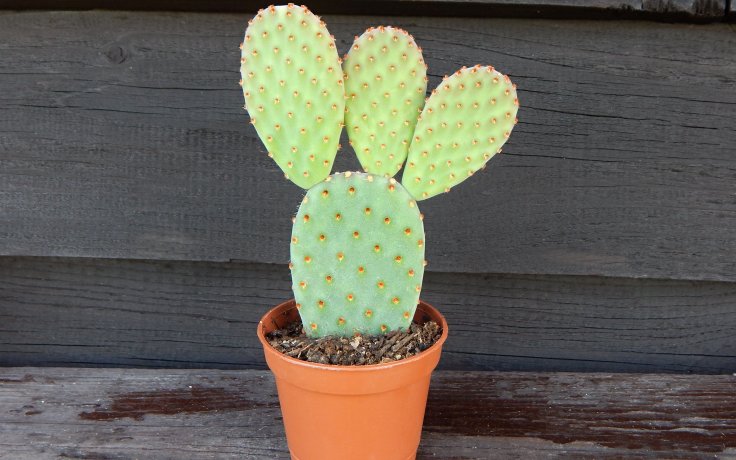




Opuntia microdasys subsp. rufida
The cactus likes a sunny habitat.
Water every few days after the substrate has dried. Do not water in winter.
It can tolerate -6.7 °C in the short term. However, the plant is not hardy.
The name rufida comes from the Latin rufus = reddish. It refers to the reddish colour of its glochids (spines).
Opuntia microdasys subsp. rufida, also known as Bunny Ears, is a cactus native to Texas and parts of Mexico. Here it grows at altitudes between 600 and 1300 m above sea level, where it is directly exposed to sunlight on the southern rocky slopes. Its form rufida means reddish. It refers to the reddish 'spines' that give this cactus its characteristic appearance.
The plant is covered with miniature pads without spines but with numerous white hairy glochidia, which are siliceous trichomes arranged in dense clusters. New cells then grow on top of the old, light green ones. This creates a tall shrub that can grow up to 1.5 m tall and about 1.5 m wide, but this is more likely in its natural habitat.
The flowers of Opuntia microdasys subsp. rufida are lemon yellow, up to 5 cm across, and appear in summer. After flowering, red fruits grow on the plant.
This prickly pear is easy to grow, but the plant requires plenty of light. It can be fertilised in the spring if deemed appropriate. In winter, ideally keep the temperature at around 8-10 °C and do not water. This plant is a decorative and interesting addition for cactus lovers.